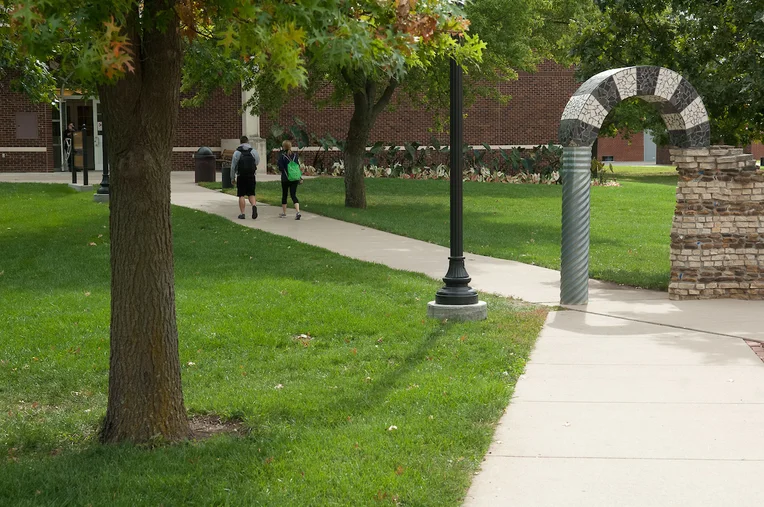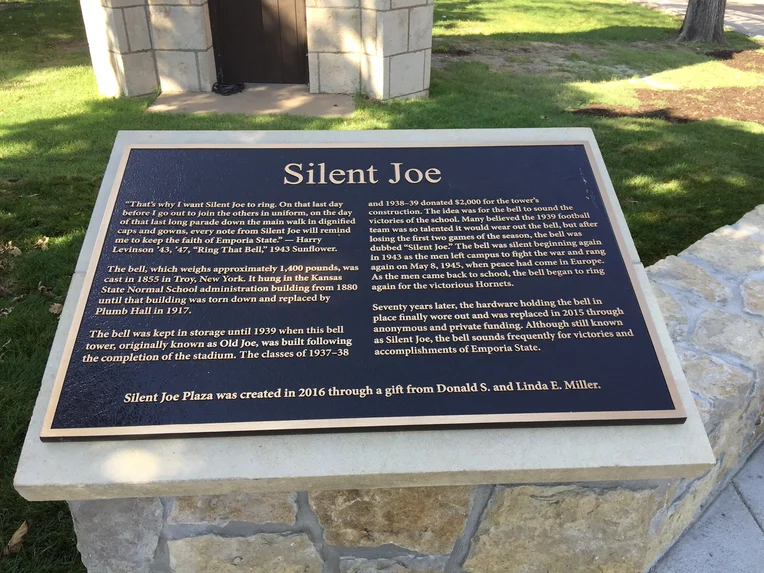History + Traditions
ESU was founded in 1863
History of Emporia State University
The university was founded in March of 1863 when the Kansas Legislature passed the enabling act to establish the Kansas State Normal School. Although founded in 1863, the first term did not begin until February 15, 1865.
The president of Kansas Normal School and its only teacher, Lyman Kellogg, taught 18 students on the second floor of the district school house. At the first commencement on June 28, 1867, Kellogg presented diplomas to Mary Jane Watson, a Civil War heroine and Judge Watson's daughter, and to Ellen Plumb, from Senator Plumb’s family. Kellogg saw to it that the Normal got off to an auspicious start before becoming a successful lawyer, honored judge, and Attorney General of Kansas.
For 19 years after its inception, KSN struggled not only with drought, but with depression, doubt, jealousy of location, and extreme lack of appropriations. By the time ESU’s fifth president, Albert R. Taylor, took charge, the school was in good condition with an enrollment of about 400, representing 43 Kansas counties and nine countries. Dr. Taylor took aggressive measures to increase enrollment, such as refunding transportation mileage to students who lived in excess of 100 miles away. By 1889, KSN had become the largest school in the state and the largest normal school in the country. The school was first accredited in 1898, the same year it graduated its first black students. That same year, the Spanish American War interrupted the course of the school year. Over 35 percent of the first three Kansas regiments were school teachers, many of them from Normal.
The name of the university has changed four times in response to the university’s growth and the increased advantages it provides to students and the citizens of Kansas. The school was founded as Kansas Normal School and later became Kansas State Teachers College (1923), Emporia Kansas State College (1974), and finally Emporia State University (1977).
Since its founding, ESU has improved the lives of students from Kansas, throughout the U.S., and around the world.
Traditions at Emporia State
Fight song
Take a listen to the ESU Fight Song as performed and recorded by the ESU Marching Hornets. And, when you’re on campus, listen twice a day to the fight song performed on the carillon (bells).
Transcript: Emporia State University Fight Song.

Arch
The arch between King Hall and Beach Music Hall was built in Spring 2002 by artist Richard Harrison and a team of Emporia State students. It was intended to be a three-dimensional link between the visual and performing art communities, and there are even some urban legends surrounding it that you can only learn about during one of our campus tours.
Silent Joe
Silent Joe
“That’s why I want Silent Joe to ring. On that day before I go out to join the others in uniform, on the day of that last long parade down the main walk in dignified caps and gowns, every note from Silent Joe will remind me to keep the faith of Emporia State.”
– Harry Levinson ’43, ’47. “Ring That Bell,” 1943 Sunflower
The bell, which weighs approximately 1,400 pounds, was cast in 1855 in Troy, New York. It hung in the Kansas State Normal School administration building from 1880 until that building was torn down and replaced by Plumb Hall in 1917.
The bell was kept in storage until 1939 when the bell tower, originally known as Old Joe, was built following the completion of the stadium. The classes of 1938 and 1939 donated $2,000 for the tower’s construction. The idea was for the bell to sound the victories of the school. Many believed the 1939 football team was so talented it would wear out the bell, but after losing the first two games of the season, the bell was dubbed “Silent Joe.” The bell was silent beginning again in 1943 as the men left campus to fight the war and rang again on May 8, 1945, when peace had come in Europe. As the men came back to school, the bell began to ring again for the victorious Hornets.
Seventy years later, in 2015, the hardware holding the bell in place finally wore out and was replaced through private funding. Although still known as Silent Joe, the bell sounds frequently for the victories and accomplishments of Emporia State.
In addition to the repairs that will allow Silent Joe to continue to ring, a donor came forth to provide funding for a carillon system, named the “Shonrock Now & Forever Chimes.” This system allows chimes to ring on the hour, creating an emotional connection between their sound and being on campus—a unique tradition through a campus voice. The chimes provide a pleasant, regular, and ongoing reminder that we are “silent no more” and that the University will continue to bring awareness to our achievements and contributions to the common good.

In 2016, a gift from Dr. Don & Linda Miller provided a place to reflect on Silent Joe. The plaza was constructed with a limestone wall, bench, and a bronze plaque for passersby to read so its history will never be forgotten.
